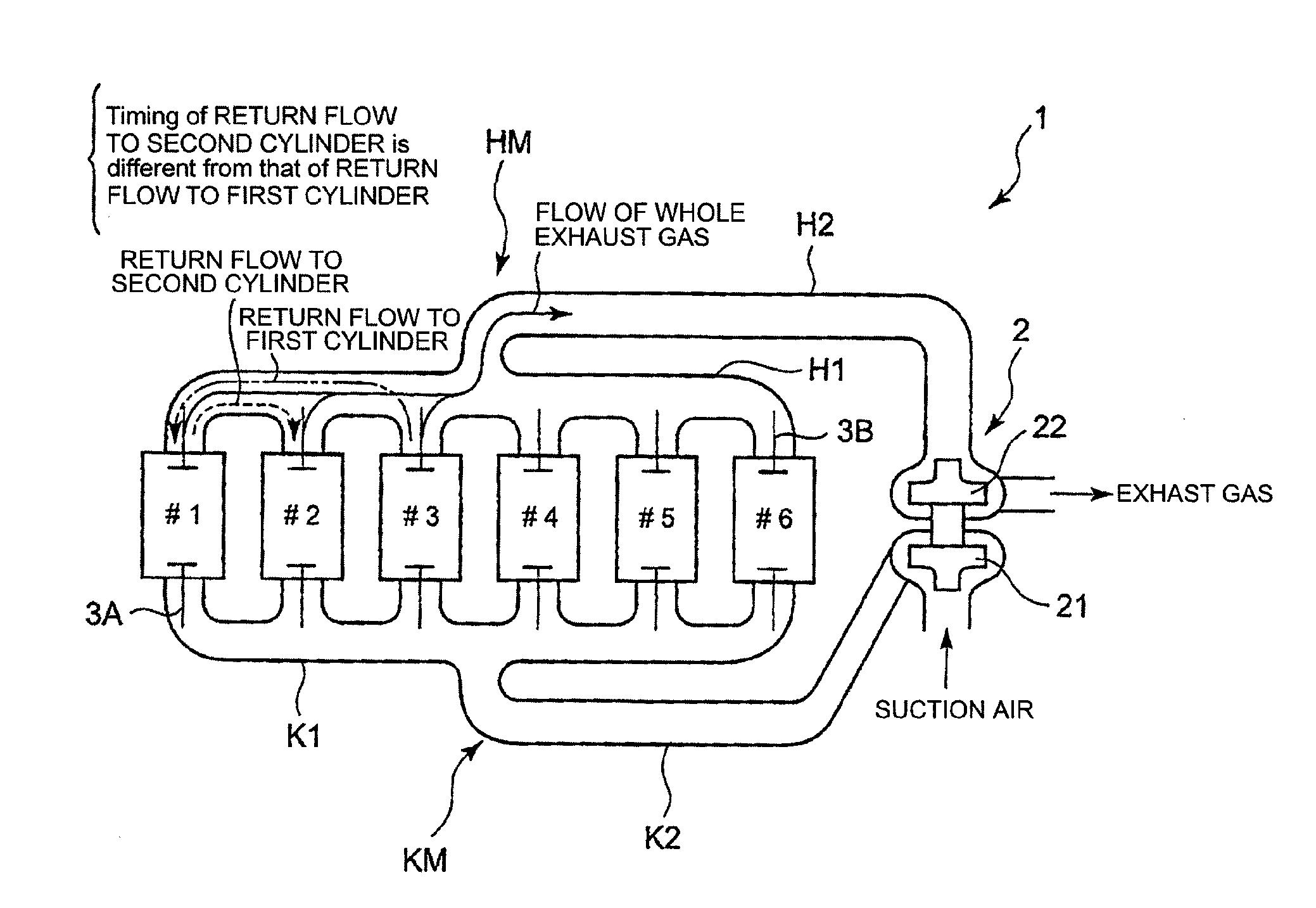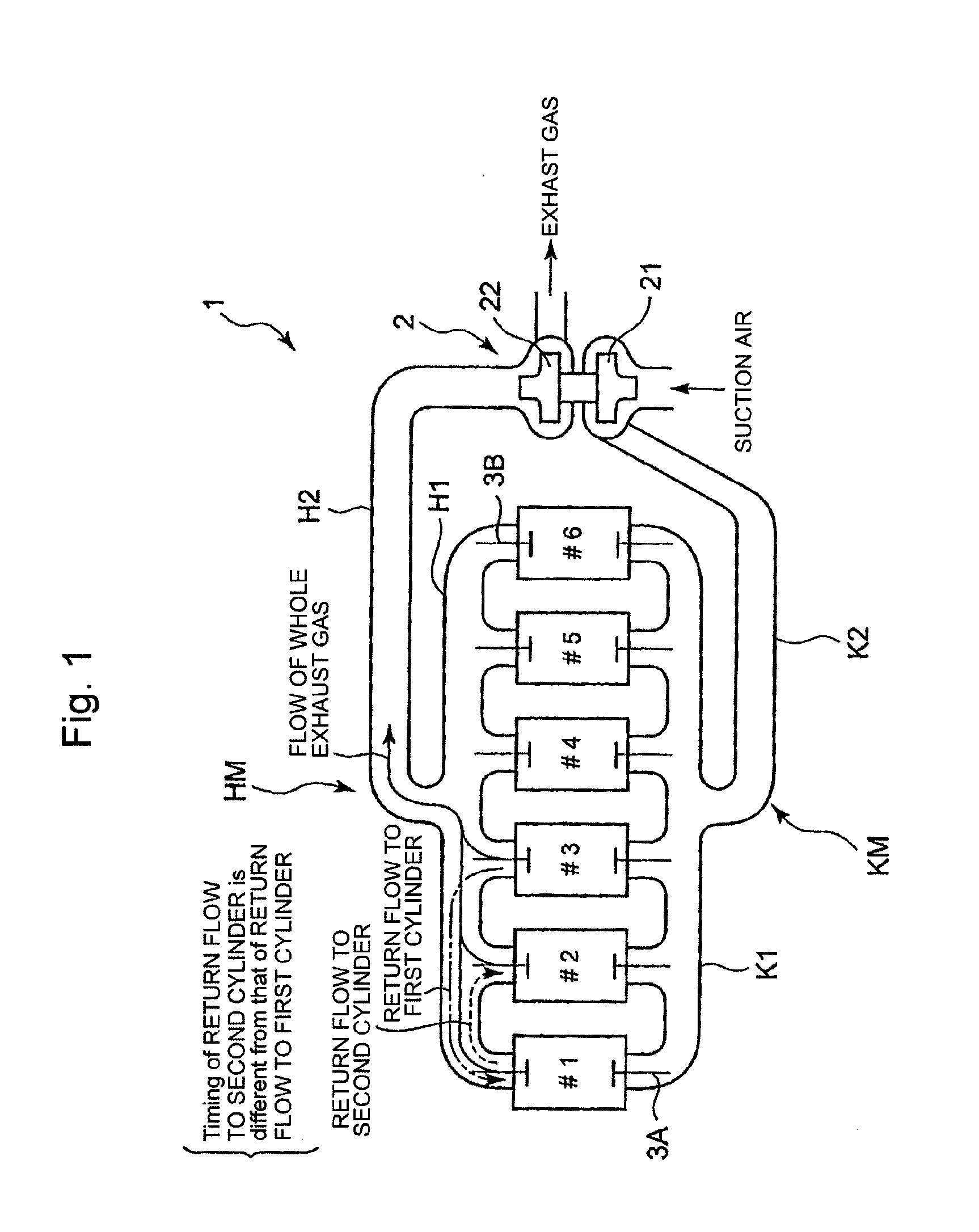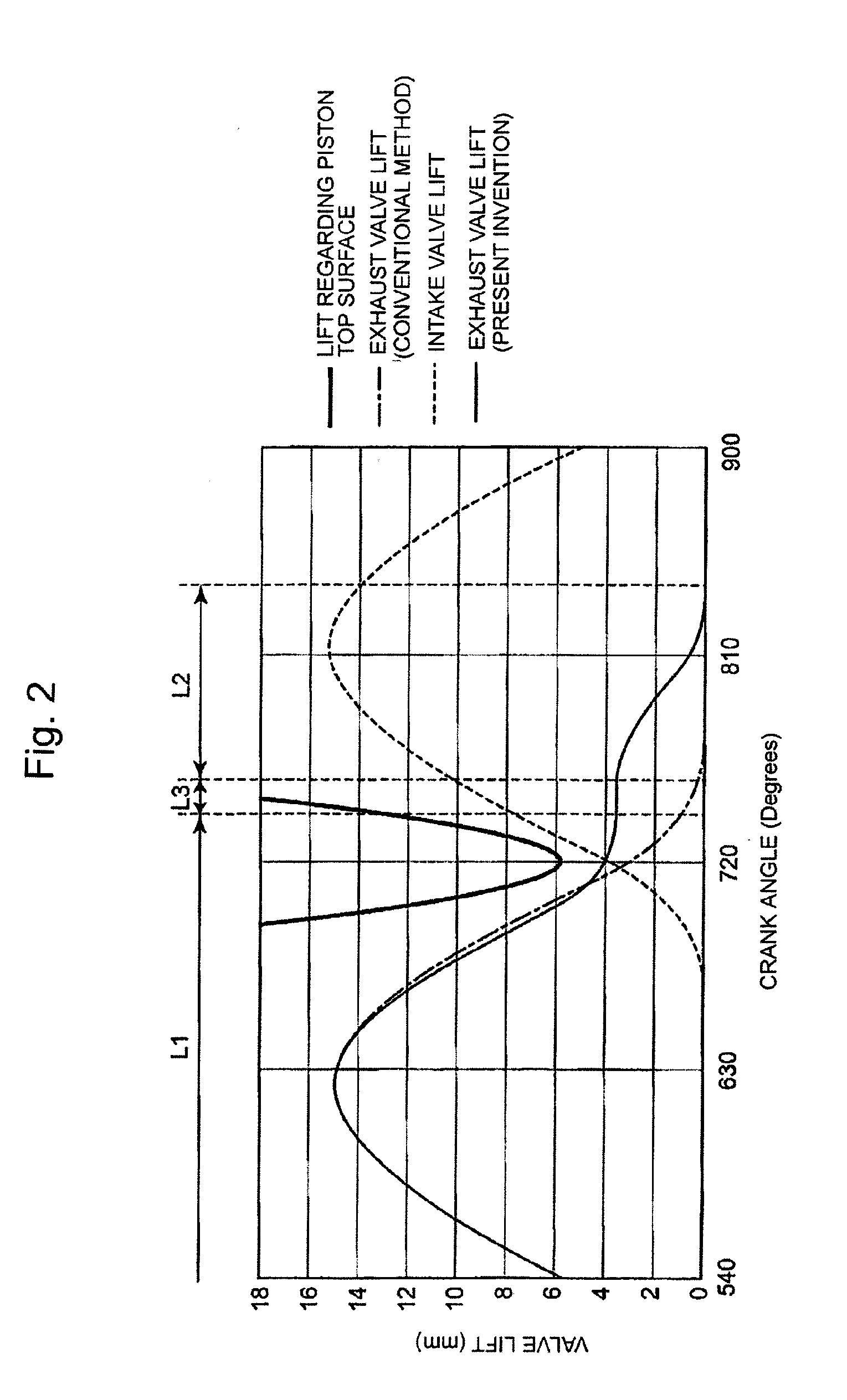Exhaust-valve lifting and lowering cam, turbocharged four stroke engine and valve timing control method
a four-stroke, turbocharged technology, applied in the direction of valve drives, electric control, machines/engines, etc., can solve the problems of valve interference with (comes in contact with) the piston, the valve is difficult to perform the general exhaust gas re-circulation (egr) of a large capacity, and the back-flow effect of the exhaust gas is substantially limited
- Summary
- Abstract
- Description
- Claims
- Application Information
AI Technical Summary
Benefits of technology
Problems solved by technology
Method used
Image
Examples
Embodiment Construction
[0092]Hereafter, the present invention will be described in detail with reference to the embodiments shown in the figures. However, the dimensions, materials, shape, the relative placement and so on of a component described in these embodiments shall not be construed as limiting the scope of the invention thereto, unless especially specific mention is made.
[0093]Further, the present invention will be described in detail with reference to the modes (variations) shown in the figures. However, the dimensions, materials, shape, the relative placement and so on of a component described in these modes shall not be construed as limiting the scope of the invention thereto, unless especially specific mention is made.
[0094](First Mode)
[0095]FIG. 1 shows an outline of a four-stroke cycle engine provided with a turbocharger according to the present invention. It is assumed that the turbocharged four-stroke cycle engine according to this mode (variation) is a diesel engine. The charge air side o...
PUM
 Login to View More
Login to View More Abstract
Description
Claims
Application Information
 Login to View More
Login to View More - R&D
- Intellectual Property
- Life Sciences
- Materials
- Tech Scout
- Unparalleled Data Quality
- Higher Quality Content
- 60% Fewer Hallucinations
Browse by: Latest US Patents, China's latest patents, Technical Efficacy Thesaurus, Application Domain, Technology Topic, Popular Technical Reports.
© 2025 PatSnap. All rights reserved.Legal|Privacy policy|Modern Slavery Act Transparency Statement|Sitemap|About US| Contact US: help@patsnap.com



